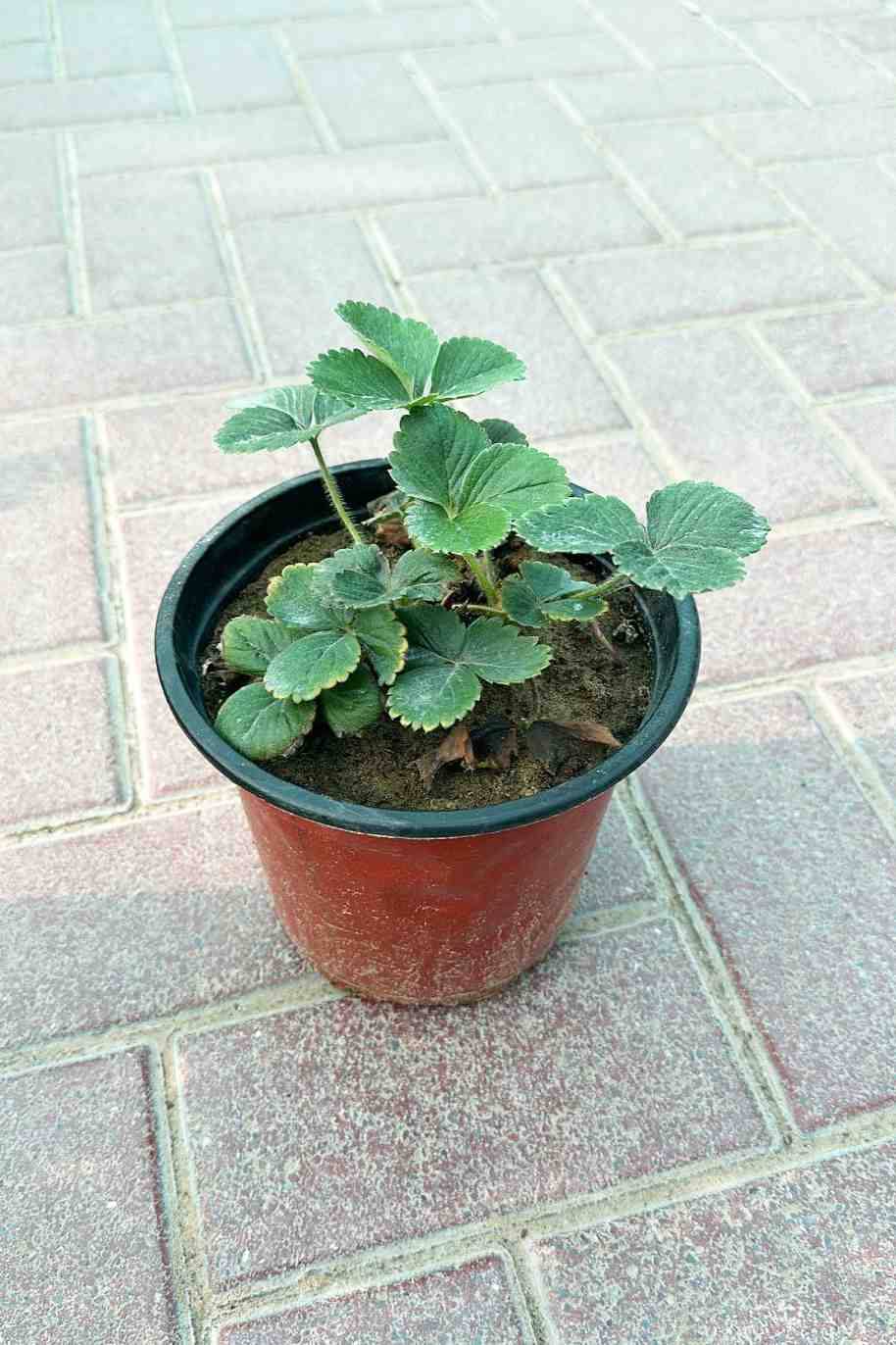Plant Bio
The strawberry plant (Fragaria × ananassa) is a perennial herbaceous plant belonging to the Rosaceae family. Known for its delicious and aromatic fruits, strawberries are widely cultivated for both commercial and home garden use. Here's a description of the strawberry plant:
Leaves: Strawberry plants have compound leaves with three leaflets. The leaves are typically dark green in color, with serrated edges. They emerge from a central crown at ground level.
Flowers: Strawberry plants produce small white flowers with five petals. The flowers appear in clusters on long stalks arising from the crown of the plant. These flowers give way to the fruit.
Fruit: The edible fruit of the strawberry plant is a fleshy red "false fruit" (the true fruit being the tiny seeds on the surface). Strawberries are known for their sweet, juicy flavor and are rich in vitamin C and antioxidants.
Runners: Strawberry plants produce long, slender stems called runners or stolons. These runners spread out from the mother plant and form new plantlets (daughter plants) at nodes along their length.
Size: Strawberry plants vary in size depending on the cultivar, but they typically reach heights of 6 to 12 inches (15 to 30 cm) and spread out horizontally via their runners.
Care Guide for Strawberry Plant:
Sunlight:
Plant strawberries in a location that receives full sun for at least 6 to 8 hours per day. Adequate sunlight is essential for fruit production.
Soil:
Provide well-draining soil rich in organic matter. A slightly acidic soil pH between 5.5 and 6.5 is ideal for strawberries. Raised beds or containers filled with a good quality potting mix are excellent options.
Watering:
Keep the soil consistently moist but not waterlogged. Water deeply when the top inch of soil feels dry, especially during dry spells or when the plants are flowering and fruiting.
Mulching:
Apply a layer of organic mulch, such as straw or shredded leaves, around the plants to conserve moisture, suppress weed growth, and keep the fruit clean.
Fertilization:
Fertilize strawberry plants with a balanced, slow-release fertilizer or a fertilizer formulated specifically for strawberries. Apply the fertilizer according to the manufacturer's instructions, usually in spring and again after the first harvest.
Spacing:
Space strawberry plants 12 to 18 inches (30 to 45 cm) apart in rows, with rows spaced about 2 to 3 feet (60 to 90 cm) apart. This spacing allows for good air circulation and room for the runners to spread.
Pruning:
Remove any damaged or diseased leaves as soon as you notice them. Trim back excess runners to prevent overcrowding and encourage larger fruit production.
Protection from Pests and Diseases:
Monitor plants regularly for signs of pests such as aphids, spider mites, slugs, and snails. Use organic or chemical controls as needed. Prevent fungal diseases like powdery mildew and gray mold by providing good air circulation and avoiding overhead watering.
Harvesting:
Harvest ripe strawberries as soon as they turn fully red. Pick them with the stem attached to preserve freshness and flavor. Pick fruits gently to avoid damaging the delicate berries.
Overwintering:
In colder climates, protect strawberry plants from winter cold and frost by covering them with straw or a frost blanket. Alternatively, move container-grown plants to a sheltered location or indoors.
Renovation:
After the final harvest of the season, renovate strawberry beds by removing old, spent foliage and thinning out overcrowded plants. This encourages healthy growth and productivity in the following year.
Propagating:
Strawberry plants can be propagated by runners or by dividing established plants. Simply cut the runners from the mother plant and replant them, or carefully divide established clumps and replant the divisions.
By following these care guidelines, you can enjoy a bountiful harvest of delicious strawberries from your garden or containers. Adjust care practices based on your specific growing conditions and the particular needs of your strawberry cultivar.








